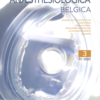Effectiveness of intraoperative cell salvage in aseptic revision total hip arthroplasty: a single-center retrospective study
Arthroplasty, Replacement, Hip, Operative blood salvage, Anemia, Erythrocyte transfusion
Published online: Dec 03 2022
Abstract
Background and study aim: Revision of total hip arthroplasty (rTHA) is associated with significant blood loss. We have used intraoperative cell savage (ICS) systematically in these patients for the last ten years. We sought to determine how often re-suspended red blood cells could be re-transfused and to identify predictors of re- transfusion.
Materials and methods: Patients who underwent aseptic rTHA between January 2011 and December 2020 at our center were enrolled in this retrospective observational study. Exclusion criteria were revision for infection or tumor. The primary outcome was the successful use of ICS defined as the ability to re-transfuse at least 125 mL of ICS blood. Secondary outcome measures included re-transfused ICS blood volume, aspirated blood volume, allogenic blood transfusion, and post-operative hemoglobin level. Uni- and multi-variable logistic regressions were used to identify patients and procedure characteristics associated with successful ICS. Mann-Whitney U tests, Student’s t tests and Chi-square tests were used to compare outcomes between patients with and without successful ICS. A P value < 0.05 was considered statistically significant.
Results: ICS was successful in 93 (69.9%) out of 133 patients. The extent of revision, categorized as isolated acetabulum, isolated femur, or combined revision was the only predictor of successful ICS. Postoperative hemoglobin levels as well as rate and amount of allogenic red blood cells transfusion did not differ between the groups.
Conclusions: ICS is useful in most patients undergoing rTHA. Those requiring a combined revision have the greatest chance of successful re-infusion.
